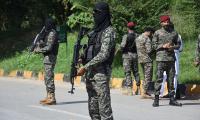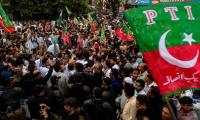In the backdrop of extraordinary uncertainties — both at home and abroad — Pakistan revealed its budget for FY2023-24 on June 9. Many experts see it as a sloppily crafted attempt to strike a balance between the IMF conditionality and the electioneering agenda.
The economy finds itself trapped in a state of stagflation, a situation characterized by stagnant growth, escalating unemployment and spiraling price inflation. The budget attempts to strike an ugly balance between populist measures — aimed at appeasing the electorate in anticipation of the forthcoming elections — and the rigorous demands imposed by the IMF for the continuation of the waning $6.5 billion bailout loan programme.
The government’s primary objective is to secure a portion of the untapped $2.5 billion funds. The budget unveiled by the government reflects an expansionary approach, aiming for a substantial fiscal deficit of 6.5 per cent of the GDP, well above the IMF’s projected 4.0 per cent for the upcoming year. This ambitious plan relies heavily on large development allocations of Rs2.7 trillion, substantial subsidies for energy and other sectors totaling Rs1.07 trillion, a significant increase of 30-35 per cent in the salaries of government employees and other expenses that could have been curtailed or minimized.
These proposals pose a significant challenge for Islamabad’s ongoing negotiations with the IMF. If the lender fails to endorse these figures, the government will be forced to revise its spending targets. The government has also not provided a clear explanation of how it intends to fulfil the crucial IMF requirement of securing $6 billion in financing to bridge the funding gap. Finance Minister Ishaq Dar has yet to present a credible plan to the lender if the sole objective is to revive IMF funding.
Pakistan is embroiled in a race against the clock, desperately seeking external financing to restore a sense of stability to its beleaguered economy. However, with less than two weeks remaining, Islamabad has failed to meet the three prerequisites set by the IMF in order to access a portion of the $2.5 billion tranche. The outcome of this high-stakes situation will have far-reaching implications for Pakistan’s economic trajectory and its ability to navigate these challenging times. With the scheduled conclusion of the $6.5 billion Extended Fund Facility (EFF) looming, time is running out for Pakistan to undergo one final review by the IMF board.
Pakistan’s foreign currency reserves are insufficient to cover even a month’s worth of imports. The initial hope was that $1.1 billion could be released in November, but the IMF has recently outlined three essential conditions that must be met before any further disbursements can be made. These conditions entail the establishment of a properly functioning foreign exchange market, the formulation of an FY24 budget that aligns with programme’s objectives, and the provision of credible financing commitments to bridge the $6 billion funding gap.
However, the challenge lies in identifying revenue-generating strategies that can make this aspiration a reality. Given our trajectory and past experiences, this task appears to be exceedingly difficult, if not nearly impossible. The challenge of convincing the IMF to accept the budget figures looms large, particularly because the government seeks to conclude the ongoing IMF programme on a positive note while anticipating entry into a new programme in the near future. The IMF’s emphasis on ongoing macroeconomic stabilization and fiscal prudence adds another layer of complexity.
It is widely acknowledged that the Fund is staunchly opposed to a fiscal deficit exceeding 4.0 per cent, coupled with a requirement of a 0.5 per cent primary surplus. Balancing these stringent demands with the government’s aspirations will necessitate careful negotiations and strategic manoeuvring. The ability to strike a compromise that satisfies both parties will ultimately determine the success or failure of the budget’s reception by the IMF, as well as its impact on Pakistan’s economic trajectory.
Pakistan’s urgent need for the IMF package is evident when considering the modest size of the Extended Fund Facility (EFF) programme. Given Pakistan’s IMF quota and the substantial portion of the current package designated for repaying the previous IMF loans, obtaining additional funds was always going to be a formidable task. This challenge has become even more pronounced recently. The reality is that Pakistan’s aspirations for a more substantial package must confront the practical constraints of its IMF standing and its complicated financial obligations.
Amid the government’s assertions of meeting all IMF conditions, analysts and economists are scrutinizing the reasons behind the Board’s reluctance to finalize the long-delayed ninth review, which has remained stagnant since November last year. Speculations abound, with some suggesting a political motive behind the delay while others point to Pakistan’s growing alignment with China and Iran as a central factor. As the puzzle surrounding the ninth review remains unresolved, it becomes clear that multiple dynamics are at play, highlighting the complex interplay between economic considerations, geopolitical alliances, and domestic politics in shaping Pakistan’s relationship with the IMF.
Screws are being turned on Pakistan because of the changing geopolitical scenario, reflecting the politicizing of this Fund by its biggest donor – the US. Pakistan finds itself in an unprecedented squeeze, receiving minimal concessions from the IMF. The economic mismanagement within the country certainly plays a role, but the shifting strategic landscape in the region has also contributed significantly. While IMF officials disavow any political influence from Washington, the truth remains that the IMF is being leveraged to exert pressure on Pakistan, subtly pushing Islamabad to realign its foreign policy priorities.
The role and significance of Bretton Woods Institutions (BWIs) as instruments of political and economic influence, primarily by the US and other Western nations, have long been subjects of debate. This discussion gained renewed momentum in the aftermath of the 2008 global financial crisis, as China’s ascendance challenges the perceived dominance of BWIs and signals a potentially more multipolar world.
Although the selfish interests advanced by the World Bank and the IMF cannot always be neatly categorized within a framework of hegemony, there is ample evidence to suggest that BWIs were always part of evolving global power equilibrium. A key critique levelled against the World Bank and the IMF revolves around the inherent political power imbalances within their governance structures.
The allocation of voting shares, primarily based on the economic size and openness of nations, creates a situation where poorer countries, often the ones seeking loans from these institutions, find themselves structurally marginalized in decision-making processes. This underrepresentation of their interests in the corridors of power perpetuates a system that some argue is inherently unfair and reinforces existing inequalities in global economic governance. The power imbalances within the World Bank and the IMF are compounded by persistent criticism: the economic policy conditions they impose, often tied to loans, projects, and financial surveillance, erode the sovereignty of borrowing nations.
These conditions restrict the policy choices available to these countries, undermining their ability to chart their development strategies independently. The IMF, in particular, acting as a lender of last resort for governments facing balance-of-payment challenges, plays a significant role in shaping and constraining national decision-making processes. This issue raises concerns about the extent to which borrower nations truly have ownership over their development paths.
The same is being witnessed in the case of Pakistan. The latter aspect indicates that Pakistan may need to turn to its ‘friends’ and not just seek debt rollovers and rescheduling, potentially including a moratorium on debts owed to these allies. This condition may be tied to the US’s demand that IMF funds not be used to repay Chinese loans.
Amidst Pakistan’s diminishing prospects, a glimmer of hope emerged on May 17 when Saudi Arabia announced its commitment to transfer $2 billion to the State Bank of Pakistan (SBP). In addition, the UAE confirmed the transfer of $1 billion (some reports suggest $1.3 billion) to the SBP.
To be continued
The writer is a freelance contributor.
Data, today, defines how we make decisions with tools allowing us to analyse experience more precisely
But if history has shown us anything, it is that rivals can eventually unite when stakes are high enough
Imagine a classroom where students are encouraged to question, and think deeply
Pakistan’s wheat farmers face unusually large pitfalls highlighting root cause of downward slide in agriculture
In agriculture, Pakistan moved up from 48th rank in year 2000 to an impressive ranking of 15th by year 2023
Born in Allahabad in 1943, Saeeda Gazdar migrated to Pakistan after Partition







